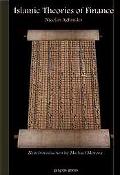3-1 please answer questions E F G

Only E F G define each of the following terms
What quolitotive factors should anolysts consider when evalud MARY This chapter explained techniques investors and managers use to analyze financial state- ments. The key concepts covered are listed here Liquidity ratios show the relationship of a firm's current assets to its current liabilities and thus its ability to meet maturing debts. Two commonly used liquidity ratios are the current ratio and the quick ratio (also called the acid test ratio). . Asset management ratios measure how effectively a firm is managing its assets. These ratios include inventory turnover, days sales outstanding, fixed assets turnover, and total assets turnov Debt management ratios reveal: (1) the extent to which the firm is financed with debt, and (2) its likelihood of defaulting on its debt obligations. They include the debt-to- assets ratio (also called the debt ratio), the debt-to-equity ratio, the times-interest- earned ratio, and the EBITDA coverage ratio. Profitability ratios show the combined effects of liquidity, asset management, and debt management policies on operating results. They include the net profit margin (also called the profit margin on sales), the basic earning power ratio, the return on total assets, and the return on common equity Market value ratios relate the firm's stock price to its earnings, cash flow, and book value per share, thus giving management an indication of what investors think of the company's past performance and future prospects. These include the price/earnings ratio, the price/cash flow ratio, and the market/book ratico. whether the firm's condition has been improving or deteriorating over time. and the use of debt all interact to determine the rate of return on equity similar successful companies Trend analysis, in which one plots a ratio over time, is important because it reveals The DuPont equation shows how the profit margin on sales, the assets turnover ratio, . Benchmarking is the process of comparing a particular company with a group of Ratio analysis has limitations, but when used with care and judgment, it can be very helpful. ONS (3-1) Define each of the following terms: a. Liquidity ratios: current ratio; quick, or acid test, ratio b. Asset management ratios: inventory turnover ratio; days sales outstanding (DSO) fixed assets turnover ratio; total assets turnover ratio c. Financial leverage ratios: debt ratio; times-interest-earned (TIE) ratio; coverage ratio d. Profitability ratios: profit margin on sales; basic earning power (BEP) ratio; return on total assets (ROA); return on common equity (ROE) e. Market value ratios: price/earnings (P/E) ratio; price/cash flow ratio; market/book (M/B) ratio; book value per share f. Trend analysis; comparative ratio analysis; benchmarking g. DuPont equation; window dressing: seasonal effects on ratios
 Only E F G define each of the following terms
Only E F G define each of the following terms 





